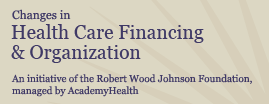The HCFO program ended in December 2016.
This site will no longer be updated, and some elements may not appear correctly.
Media Accounts Raise Price Transparency Questions, RWJF Grants Seek Answers
In the past year, national news stories have focused a lot of attention to the prices charged for health care. This coverage has included Stephen Brill’s Time Magazine piece, “Bitter Pill: Why Medical Bills Are Killing Us,” and a series of articles by Elizabeth Rosenthal in The New York Times. Accounts like these have underscored how much prices for a given health care service can vary, sometimes within a given health care setting, and how difficult it can be to determine actual prices paid.
Reporting by Brill, Rosenthal, and others has helped stir interest in price transparency as a way to get the greatest value for a given health care dollar. Some employers and state governments have established databases and websites to help consumers shop for health care.1 As recently advocated by former Senator (and cardiac transplant surgeon) Bill Frist in a Washington Examiner opinion piece, price transparency tools are also seen as key to the ability of reference pricing to provide spending discipline, especially among high-cost patients who exceed their annual deductible. Under reference pricing, insurers or employers limit the amount they will pay for a service or drug to an amount necessary to receive high-quality care. A patient choosing a more expensive option pays the difference.
Price awareness among patients and payers appears to be having an impact on providers. As highlighted in a recent Miami Herald/Kaiser Health News story, Miami Children’s Hospital has revised their stated prices (the so-called “chargemasters”) to reflect more accurately what insurers actually pay. One expert quoted in the article believes the newly-issued prices are still unlikely to correlate closely with what the hospital actually collects from payers, but the hospital’s move does reflect consumers’ growing demand for price information.
Another recent media account, a December 23, 2013 post on The New Yorker’s blog, takes a more cautious view of the potential for price transparency to improve outcomes. Drawing on her own experience with a broken clavicle and findings from the field of behavioral economics, cardiologist Lisa Rosenbaum suggests that presenting price information to individuals can feed a feeling of “scarcity” that actually impairs decision-making. The underlying research indicates that the effect can be more pronounced among low-income individuals, but not limited to them.
These news items suggest policymakers will need the work of health services researchers to better understand the potential for price transparency to promote better cost and quality outcomes. Toward that end and as announced in December 2013, the Robert Wood Johnson Foundation’s Quality/Equality team, with support from the HCFO program, has funded six new grants that examine the use of price data as a tool to influence consumer and provider behavior and as a way to better understand how Accountable Care Organizations and other forms of hospital-physician integration affect prices in the marketplace. HCFO looks forward to highlighting the results and their policy implications as the researchers publish their work.
1 For an overview of such efforts, see: http://www.catalyzepaymentreform.org/images/documents/stateoftheart.pdf
